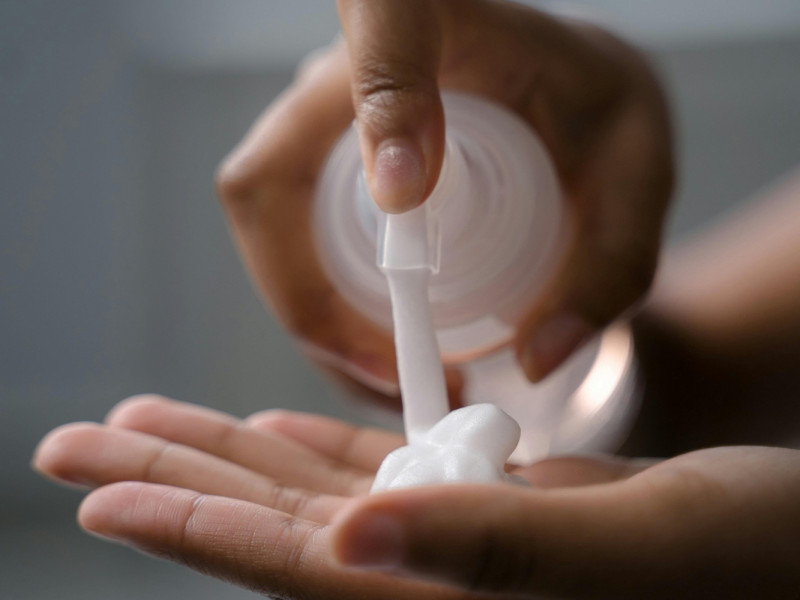The journey from your product's conception in the lab to its appearance on retail shelves is an intricate process. Each step in the supply chain must be carefully planned and executed to ensure that your products are produced efficiently, meet quality standards, and comply with regulations. Understanding this process and working closely with your manufacturing partner will allow you to ensure a seamless transition from idea to market.
In this blog post, we will break down the essential stages of the beauty product supply chain and discuss the crucial role your contract manufacturer plays in each step.
1. Ingredient Sourcing: The Foundation of Your Product
The supply chain begins with sourcing the raw materials and ingredients needed for your beauty product. The quality of these ingredients is critical to the final product’s performance, effectiveness, and safety. Whether you’re using natural botanicals, cutting-edge active ingredients, or synthetic compounds, sourcing high-quality materials is the first step toward creating a premium beauty product.
Your contract manufacturer can assist in sourcing ingredients by leveraging their relationships with reputable suppliers. They can also ensure that the ingredients used meet regulatory standards and are safe for consumers. Additionally, many brands are now opting for sustainable or ethically sourced ingredients, which require transparency and careful selection.
2. Formulation and Testing: Creating the Perfect Product
Once the ingredients are sourced, the next step is formulating the product. This stage involves creating a balanced recipe that delivers the desired performance—whether it’s a hydrating serum, a long-lasting foundation, or a volumizing mascara. Your manufacturer will work with you to fine-tune the formulation based on your vision and brand goals.
Product testing is equally important during this stage. Rigorous testing ensures that the formula is stable, safe, and effective. Stability testing checks how well the product maintains its consistency, colour, and fragrance over time, while safety testing ensures the product is non-irritating and complies with regulatory standards.
This stage is also where prototypes are developed. Depending on the product, you may test several iterations before finalizing the formula. It’s essential to ensure that the product is safe, stable, and performs as intended before moving on to production.
3. Manufacturing: From Prototype to Full Production
Once the formula is perfected, the next stage in the supply chain is mass production. During this phase, your manufacturer will create larger quantities of the product while maintaining quality control and consistency. Depending on your brand’s needs, your contract manufacturer will either handle small batch production or larger-scale manufacturing to meet your projected demand.
Manufacturing includes processes like mixing, heating, blending, and filling. Each stage needs to be carefully managed to ensure that every product is produced according to your specifications. The right manufacturer will have experience with these processes, ensuring that the product meets both safety and performance standards while maintaining consistency across each batch.
4. Packaging and Labelling: The Finishing Touch
Packaging is more than just an aesthetic choice—it’s an essential part of the product’s function and branding. Packaging protects the product, ensures ease of use, and reflects the brand’s identity. During this phase, your manufacturer will source and prepare the packaging, ensuring it is properly designed and meets all regulatory requirements.
Labelling is another critical component of the packaging process. Labels must include necessary product information, such as ingredients, usage instructions, warnings, and certifications (e.g., cruelty-free, organic, etc.). Your manufacturer will ensure that all labels comply with local and international regulations to avoid costly legal issues or product recalls.
5. Distribution and Logistics: Getting the Product to Market
Once the product is manufactured and packaged, the next step is distribution. This involves moving the products from the manufacturing facility to retail locations or directly to consumers. A robust distribution plan is crucial to getting your product to market on time and in the right condition.
Whether you’re working with retailers, distributors, or selling directly through e-commerce, managing inventory, shipping, and logistics is essential. Your manufacturer can help coordinate logistics and ensure that products are shipped efficiently, whether nationally or internationally.
6. Managing Lead Times and Inventory
Lead times—the time between placing an order and receiving the final product—can be one of the most challenging aspects of the beauty supply chain. Managing these lead times is crucial for meeting demand and avoiding stockouts or overproduction. A strong partnership with your manufacturer helps ensure that your lead times are well-managed, allowing you to respond quickly to consumer demand.
Equally important is managing inventory levels to avoid overproduction or underproduction. Effective inventory management ensures that you have the right amount of product available at the right time.
Final Thoughts
Understanding the beauty product supply chain is essential to ensuring the success of your brand. From sourcing quality ingredients to managing production, packaging, and distribution, every step plays a crucial role in delivering a high-quality product to your customers. By working with a reliable contract manufacturer who understands the complexities of the supply chain, you can ensure that your products are produced efficiently, safely, and to the highest standards.
We’re creating beauty, differently.

